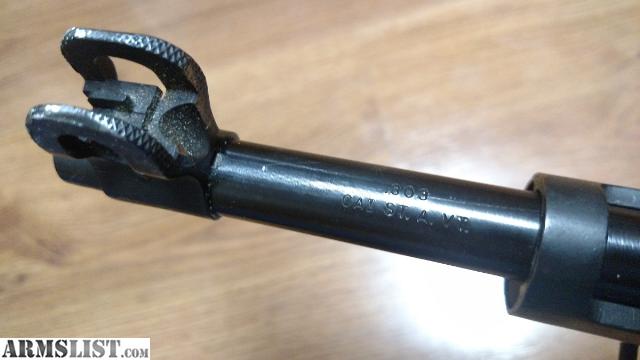
The Cavalry Carbine was also half-stocked. The Cavalry Carbine Snider-Enfield used an even shorter 19.5in (0.5m) barrel fixed by a single barrel band. The barrel was fitted with two barrel bands The Artillery Carbine had a shorter 21.3in (0.54m) barrel with the same rifling pattern as the Short Rifle. The Short rifle was issued to rifle units and sergents of line infantry. The barrel was fixed to the stock using two barrel bands. However the barrel had two extra grooves and a tighter twist rate of 1:48, increasing the muzzle velocity and compensate for the reduced barrel length. This was a shorter version (as the name suggests) with a 33in barrel. The overall length of the Long Rifle was 54.3in (1.38m), with three barrel bands holding the barrel to the stock and 3 rifle grooves with a 1:72 twist rate. This was 3in shorter than the Pattern 1853 Enfield, although converted Pattern 1853s retained their 39in barrels. The Long Rifle was among the longest early rifles, with a 36in (0.91m) barrel. Other versions were built to make the Snider-Enfield more usable.Įffectively the standard Snider-Enfield.

The Snider-Enfield would be developed into the Mark III with a steel barrel and a redesigned breech lock mechanism. The Snider-Enfield was originally based on the Pattern 1853 Enfield, these versions known as the Mark I. This refined design meant that the Snider-Enfield was more than capable of firing 10 rounds per minute, a great improvement on the older muzzle loaded weapons (which were expected to fire around 3 rounds per minute). The Boxer-cartridge was also used for the first time in a service rifle, designed with a metal case. This made the replacement/conversion easier and cheaper. 58in (14.7mm) Minie Ball of the Pattern 1853, meaning that the Pattern 1853 did not need to have a barrel change to be converted. This was marginally smaller than the former. The Snider-Enfield was designed to fire the. The Snider-Enfield lacked an ejector rod, meaning that the cartridge had to be removed by hand or, more likely, the rifle was shaken harshly to allow the cartridge to fall out. The breech block contained a diagonally sloped firing pin, which was struck by the hammer.

However the other parts of the Pattern 1853 Enfield, such as the stock, barrel, hammer mechanism and lock mechanism ( percussion lock). The conversion involved the addition of a breechblock and reciever assembly. The Mark I of the Snider Enfield was, in essence, a conversion of the Pattern 1853 Enfield. Tests proved the superiority of the breech loading mechanism (compared to the muzzle loading method of the Pattern 1853 Enfield and earlier muskets). This mechanism had existed since 1853, and by 1860 Enfield had designed the Snider Enfield. The Snider-Enfield used the new Snider action, designed by Jacob Snider, which used a side-hinged breechblock action (the breech (the part of the firearm where the cartridge is loaded) is a seperate chamber mounted on a single side hinge).


 0 kommentar(er)
0 kommentar(er)
